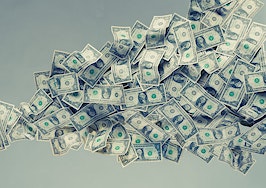The Paycheck Protection Program (PPP), a much-hyped if sometimes-troubled federal offering that doled out free money to a multitude of small businesses, is closing its application process without having spent many billions of dollars that lawmakers set aside for it.
The PPP launched in early April and was one of the federal stimulus programs lawmakers created to avert economic disaster amid the coronavirus pandemic. The program let companies with 500 or fewer employees apply for a loan worth up to two and a half times their monthly payroll. If those companies used most of the money to pay their employees, the loan turned into a grant that didn’t have to be repaid.
The program consequently represented an invaluable lifeline to firms that took a hit during the pandemic.
However, the application window for companies hoping to get the cash closes on Tuesday — and billions of dollars are still on the table.
According to the latest government report, the program had doled out about $519 billion as of June 27. Real estate and leasing companies collected a total of more than $15.5 billion, which accounts for just about 3 percent of the overall PPP pot.
Those are all huge sums.
However, the report also shows that as of Saturday the program still had more than $134 billion that it could potentially give away. New reports only come out once a week and some of that money has probably been allocated in the last couple of days. But given the speed at which it was being awarded recently, it’s safe to assume that the lion’s share of the cash has not been used. And because the application window is now closing, it probably won’t be used, at least right now and as part of the PPP.
So what happened? Why is free money apparently going unclaimed?
There are probably a number of reasons, but one of the biggest may be the PPP’s rocky rollout. Owing perhaps to the speed with which lawmakers created the offering, there were initially numerous unanswered questions about who could apply. Later, contract workers — a status describing many people in real estate — had to wait for a later application date. Moreover, many applicants initially faced technical glitches or approached lenders but failed to get responses.
By May, money began flowing to a number of real estate businesses. However, questions about the program lingered thanks in part to the fact that it awarded money to businesses such as burger chain Shake Shack that few would consider “small.”
In the end, Shake Shack and many other larger companies ended up returning their money, resulting in $38.5 billion worth of canceled loans, according to the Washington Post.
In real estate specifically, it’s also possible that some companies ultimately decided they simply didn’t need the help; while the market slowed down considerably in the early days of the pandemic, both agents and economists have since described a relatively robust recovery when it comes to housing.
But in any case, the conversation around the PPP is now shifting to how the left over money should be used. For example, the Washington Post quoted Sen. Ben Cardin as saying the cash should be funneled into a second round of lending that is targeted at companies still needing assistance. And the Wall Street Journal reported that a task force is currently trying to figure out what to do next.







